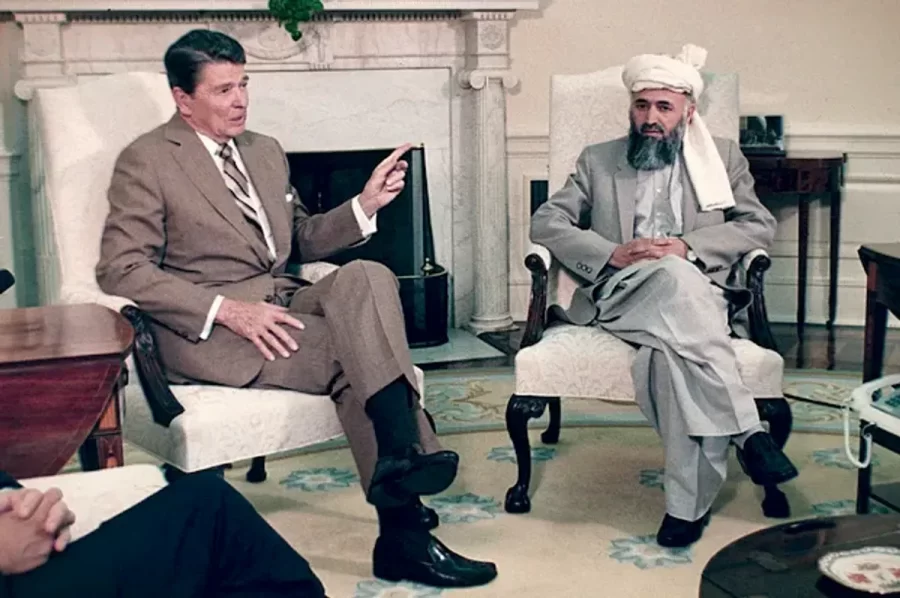Operation Cyclone: How the US Inadvertently Aided Al Qaeda and the Taliban
A history of America’s long of complex involvement in Afghanistan after its recent withdrawal
Following America’s withdrawal from Afghanistan and the Taliban’s immediate subsequent recapture of it, many have wondered what the US really accomplished in Afghanistan for the past two decades. The American military’s involvement in Afghanistan in the modern era started as early as 1979 with the CIA’s funding of the Mujahideen during the Soviet-Afghan War, an effort that became known as Operation Cyclone.
According to Britannica, the Afghan War was launched with the overthrow of the prevailing centrist government in April of 1978, which was instead replaced with Marxist-Leninist political groups who shared power. This new government forged ties with the Soviet Union, purged domestic opposition, and began a series of extensive land and social reforms that were deeply resented by Afghanistan’s anti-communist population. The widespread opposition to the government caused insurgencies to form amongst various tribal and urban groups, with these guerilla groups becoming later known as the Mujahideen. This resistance, coupled with internal fighting and coups within the Marxist-Leninist government factions, contributed to the Soviet Union’s decision to invade Afghanistan in December of 1979, sending roughly 30,000 troops in and installing a client state with a new president. This invasion caused the Mujahideen rebellion to accelerate and grow, spreading across the country.
The CIA then began covertly funding the Mujahideen in July of 1979 after Pakistani intelligence officials privately lobbied the US and its allies to send resources to the insurgents. However, the resources allocated to this effort dramatically increased in response to the Soviet invasion. At its peak, the funding for this program reached over $630 million per year in 1987 under the Reagan administration. This funding went towards providing the Mujahideen weapons, as well as logistical support and training programs to help the rebels fight against the Soviets. By the time the US ended Operation Cyclone in 1989, the CIA had channeled more than $2 billion dollars to the Mujahideen, making it one of the longest and most expensive covert CIA operations ever undertaken.
Much controversy has surrounded Operation Cyclone and whether or not the CIA’s funding of the Mujahideen may have indirectly helped terrorist groups or fueled human rights abuses. Its supporters, however, argue that the Operation was absolutely necessary in order to fight back against the Afghan government’s human rights abuses and the Soviet Union’s killing of innocent civilians. Emran Feroz, a journalist for NewLines Magazine, asserts that the Afghan communist party imprisoned and executed tens of thousands of innocent Afghan intellectuals and political activists, as well as targeted religious and tribal leaders. Feroz goes on to cite that “A lot of those who succumbed to their ghastly fates…were targeted simply because they prayed five times a day, betrayed any sign of religiosity, were people of some standing and influence, or criticized the mass-murdering regime that was in power.” Feroz, citing a United Nations report from 1986, insists that, while the Mujahideen did kill thousands of civilians during the Soviet-Afghan War, that number is not close in comparison to the tens of thousands of civilians that the Soviets killed, as well as the torture and violence they inflicted.
Much of the criticism surrounding Operation Cyclone centers around how the program leaned heavily towards funding and supporting militant groups, including groups with jihadist ties. This has caused the US’s funding and weapons to, indirectly, support terrorist groups such as the Taliban and Al Qaeda since several Mujahideen commanders became affiliated with these groups after the end of the Soviet-Afghan War.
Jessica Donati of The Wall Street Journal and Britannica both point out how Mullah Mohammad Omar, the man who led the Taliban in 1996, was a former Mujahideen commander. Omar rose through the ranks of the Taliban following the vacuum of power that was created after the US’s toppling of the Soviet-installed client state, consolidating power and eventually becoming its military chief. Robert Dreyfuss of Mother Jones Magazine contends that Omar was not the only jihadist Mujahideen member that the US may have funded, giving Gulbuddin Hekmatyar, a former leader of one of the most violent and anti-Western Mujahideen factions, as the primary example. Dreyfuss cites Graham Fuller, a former Kabul bureau chief for the CIA, and recounts how the US gave Hekmatyar $600 million in the 1980s. Hekmatyar briefly became Afghanistan’s prime minister and committed human rights abuses such as ordering the shelling of Kabul, reportedly killing 25,000 civilians in 1994. Hekmatyar, Dreyfuss explains, would later become a close ally of Osama bin Laden, and continues to lead jihadist efforts against the US today after the CIA failed to take him out in a drone airstrike in 2002.
Ultimately, Operation Cyclone has been, and most likely will continue to be, shrouded in controversy. Like most other foreign policy issues, both sides of the debate over this Operation have valid points to make. But it is vital that we continue to question America’s past foreign policy actions and critically examine them, especially when they have such important modern-day implications, such as what has transpired in Afghanistan.


